Global Music Publishing Market - Comprehensive Data-Driven Market Analysis & Strategic Outlook
The global music publishing market is the most compelling branch of the creative economy, characterized by centuries of international exchange, shifting technology, and shifting audience behavior. It has its roots as far back as the late 15th century when printed sheet music first emerged in Europe, allowing composers to achieve renown and royalties for their works. As music progressed from royal courts to public theaters, protection of intellectual property was a notion. Systematic publishing companies had established themselves by the 19th century, bringing organization to an industry soon to become an international entertainment norm.
- Global music publishing market value of around USD 7949.3 million in 2025, having a CAGR of around 7.8% from 2032, with the opportunity to reach beyond USD 13453.4 million.
- Mechanical Rights share a market value of nearly 24.3%, driving innovation and expanding applications through intense research.
- Key trends driving expansion: Increase in demand for digital music streaming platforms, Growth in the usage of music in films, advertisements, and video games
- Chances are: Implementation of blockchain and AI-driven solutions to track and manage royalties in an efficient manner
- Key finding: The market will develop exponentially in value during the next ten years, emphasizing tremendous growth potential.
- The 20th century was a turning point for the world music publishing industry, as mechanical rights and broadcasting laws introduced new revenue channels.
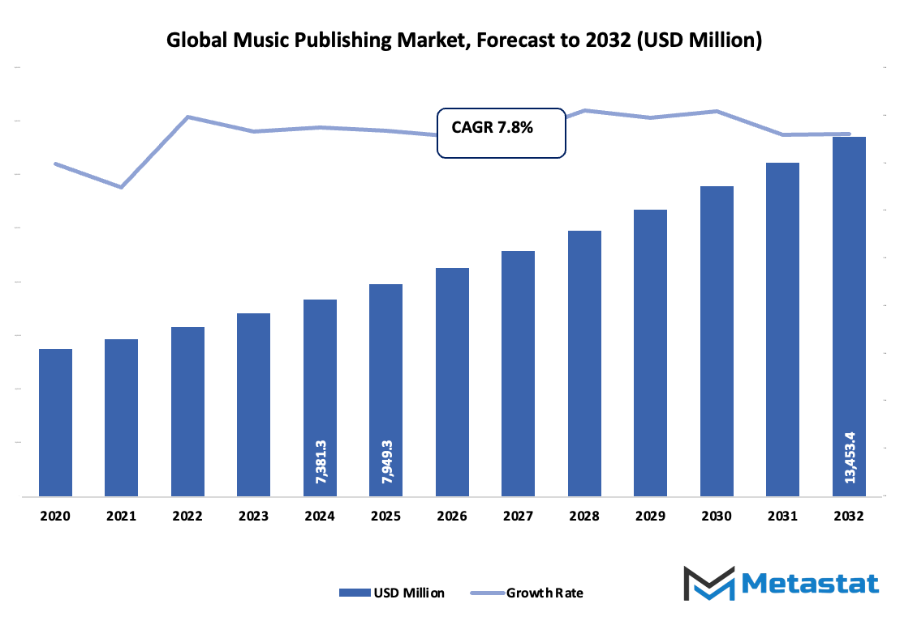
The introduction of the radio, followed by the vinyl and cassette boom in sales, grew audience size and opportunities for licensing. Publishers no longer operated solely as agents for printed sheet music and instead became owners of creative property within an expanding commercial framework. This changed again when recording technology moved online, realigning the means by which works were shared, accessed, and benefited from. The rise of the internet in the late 1990s disrupted traditional publishing models. Piracy initially threatened cashflows, but digital evolution subsequently introduced new doors of opportunity in online licensing and streaming. The business changed, growing to love synchronization deals with films, commercials, and video game markets, opening doors previously unseen for producers and songwriters. These changes led publishers to shift their mindset, spending more on artist development, data insight, and cross-platform licensing. Now, the world music publishing business will become even more revolutionary as artificial intelligence, blockchain, and digital rights management technologies revolutionize ownership transparency and royalty distribution.
The behavior of consumers will be increasingly skewed toward on-demand and algorithmic discovery, causing it to be difficult for publishers to stay relevant and yet not compromise the artistry's essence. From published pages to digital bits, the history of music publishing has mirrored human's engagement with creativity itself restlessly responsive, deeply intimate, and always determined to connect sound with feeling everywhere across the world.
Market Segments
The global music publishing market is mainly classified based on Type of Rights, Revenue Source, Client Type, End-User.
By Type Of Rights is further segmented into:
- Mechanical Rights: Mechanical Rights will be in high demand since digital downloads and streaming replicate huge amounts of content daily. With automated payment systems, creators will get reasonable compensation for every duplication. The consistent demand for legal coverage and open payment distribution will make this segment critical for long-term growth for the business.
- Performance Rights: Performance Rights will gain significance as live concerts, radio, and internet streaming sites continue to grow in size. Their growth will yield a secure revenue from public performances across markets globally. Enhanced digital tracking systems will more accurately account for precision in collecting royalties, to the rights holders' and enhanced industry clarity benefits.
- Synchronization Rights: Synchronization Rights shall experience high growth due to enhanced utilization of music in films, video games, and advertisements. Online video site popularity will enhance demand for original scores. Joint ventures among publishers and production companies will ensure creatural diversity and improved economic opportunities for content licensing.
- Print Rights: Print Rights will have value through instructional content, sheet music, and sanctioned publications. With electronic printing and web dissemination on the rise, more availability around the world will be available. This will open new opportunities for publishers to take advantage of written music content and expand distribution to institutions, instructors, and musicians.
By Revenue Source the market is divided into:
- Royalties: Royalties will remain a major source of revenue in the global music publishing market. With streaming and downloads dominating listening modes, structured payment systems will have creators getting paid on a regular basis. Transparent royalty tracing and use of blockchain technology will also build confidence and effectiveness among all market players.
- Licensing: Licensing will continue to be at the center of content use across all platforms. As more multimedia content is created, demand for licensed music will grow rapidly. Automated licensing systems will enable easier handling of contracts and ensure that companies and creators collaborate better on worldwide projects.
- Subscription: Subscription models will expand as more individuals choose paid streaming sites for greater access and quality. The transition will facilitate consistent revenue stream and improve payment systems for publishers. The model will also foster audience loyalty and create a healthy environment for continuous content usage.
By Client Type the market is further divided into:
- Songwriters: Songwriters will have international visibility through digital distribution and enhanced royalty schemes. There will be more opportunities for them to collaborate with wider audiences. Creativity products under stronger copyright protection and simpler publishing deals will be identified and compensated uniformly.
- Composers: The destiny of composers will be faced with greater challenges in entertainment, advertising, and gaming markets. The use of custom scores will rise as the production of content is booming around the world. Faster and more efficient licensing procedures will ensure fair earnings while more advanced technology will help in the management of works efficiently and promote new musical creativity.
- Publishers: Publishers will continue to play a crucial role in administering, licensing, and promoting creative material. Their function will expand with data tools for tracking and monetization. With their promotion of fair deals and rights administration, publishers will still have an important role to play in maintaining balance between creators and commercial actors.
- Record Labels: Record Labels will change by focusing on digital publishing and global distribution networks. Strategic alliances with web audio providers will maximize artist visibility. Focusing on metadata accuracy and rights management will improve royalty accuracy and provide long-term financial health.
By End-User the global music publishing market is divided as:
- Streaming Services: Streaming Services will shape the future of the global music publishing market through real-time analytics and audience data. Enhanced user experiences and personalized recommendations will drive engagement. As more creators release content directly on these platforms, competition will boost quality and market value.
- Film & TV: Film & TV will continue to rely heavily on licensed music for storytelling and emotional impact. Demand for original compositions will rise as visual entertainment expands across digital platforms. This will strengthen synchronization rights and create consistent opportunities for publishers and composers alike.
- Advertising Agencies: Advertising Agencies will increasingly depend on licensed music to create brand recognition and emotional appeal. As marketing campaigns grow across social media and digital channels, the value of creative soundtracks will rise. Strategic collaborations with publishers will ensure effective use of musical assets.
- Other: Other segments, including gaming, live performances, and education, will contribute notably to the global music publishing market. These sectors will explore innovative licensing models and interactive content experiences. The continued fusion of music with new technologies will open diverse pathways for industry advancement.
|
Forecast Period |
2025-2032 |
|
Market Size in 2025 |
$7949.3 Million |
|
Market Size by 2032 |
$13453.4 Million |
|
Growth Rate from 2025 to 2032 |
7.8% |
|
Base Year |
2024 |
|
Regions Covered |
North America, Europe, Asia-Pacific, South America, Middle East & Africa |
By Region:
- Based on geography, the global music publishing market is divided into North America, Europe, Asia-Pacific, South America, and the Middle East & Africa.
- North America is further divided into the U.S., Canada, and Mexico, whereas Europe consists of the UK, Germany, France, Italy, and the Rest of Europe.
- Asia-Pacific is segmented into India, China, Japan, South Korea, and the Rest of Asia-Pacific.
- The South America region includes Brazil, Argentina, and the Rest of South America, while the Middle East & Africa is categorized into GCC Countries, Egypt, South Africa, and the Rest of the Middle East & Africa.
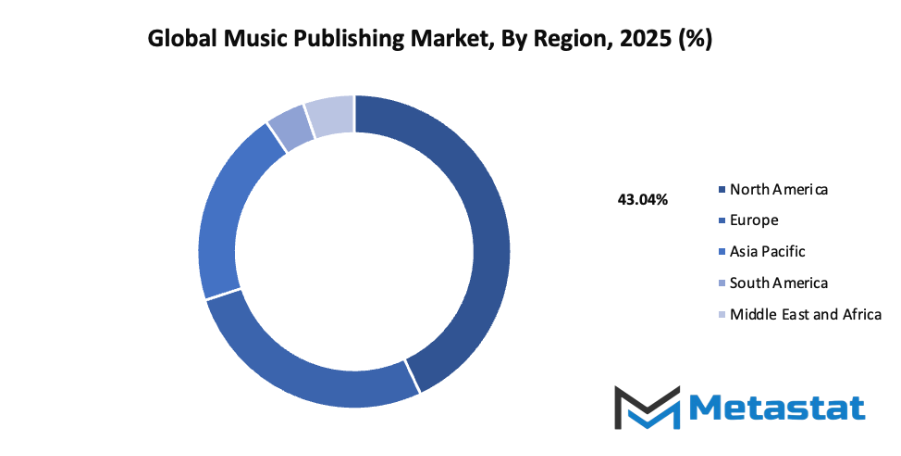
Growth Drivers
- Growing demand for digital music streaming platforms: The steady increase in digital streaming platforms will be a key driver for the global music publishing market. The shift from physical to digital formats has encouraged more listeners to access music through smartphones and online applications. This change will help publishers reach wider audiences while creating continuous income through licensing and subscription services.
- Increasing use of music in films, advertisements, and gaming: The growing role of music in films, advertisements, and video games will fuel the global music publishing market. Music adds emotional value and brand identity to visual content, making it essential across industries. As entertainment and marketing sectors expand, publishers will find new opportunities for synchronization licensing, boosting long-term growth.
Challenges and Opportunities
- Copyright infringement and piracy issues: Unauthorized distribution and piracy will remain major threats to the global music publishing market. Despite legal actions and technological barriers, online sharing of copyrighted material continues to affect revenues. Strengthening digital protection laws and using advanced tracking systems will help reduce losses and safeguard creators’ intellectual property.
- Complex licensing and royalty distribution processes: Managing licenses and royalty payments will continue to challenge the global music publishing market. With multiple stakeholders and varied regional regulations, ensuring accurate payment and usage tracking is difficult. Streamlining these systems through standardized procedures and improved data management will enhance efficiency and trust among industry participants.
Opportunities
- Adoption of blockchain and AI-based solutions for efficient royalty tracking and rights management: The global music publishing market will benefit greatly from the use of blockchain and AI technologies. Blockchain can ensure transparency in rights ownership, while AI can automate royalty tracking and data analysis. These tools will simplify management processes, reduce disputes, and guarantee faster, more accurate payments to rightful owners.
Competitive Landscape & Strategic Insights
The competitive landscape of the global music publishing market shows a balance between long-established global powerhouses and rapidly rising regional players. Companies such as Sony Music Publishing, Universal Music Publishing Group (UMPG), Warner Chappell Music, Disney Music Group, Wixen Music Publishing, Downtown Music Publishing, Concord Music Publishing, BMG Rights Management, Reservoir Media, Kobalt Music, Round Hill Music, Primary Wave Music, Anthem Entertainment, Pulse Music Group, and Horus Music have created strong foundations that continue to shape the direction of this industry. Each organization contributes to an ecosystem where creativity, technology, and strategy meet to drive value from musical works and their intellectual property.
From a futuristic viewpoint, the competitive environment will continue to expand as digital transformation influences how music is produced, distributed, and monetized. The integration of artificial intelligence, blockchain, and advanced data analytics will redefine how copyrights are managed and how royalties are distributed. These innovations will give publishers more efficient systems to track usage across streaming platforms, social media, and virtual environments. As a result, competition will increasingly depend on the ability to adapt to technology, predict market trends, and strengthen partnerships with artists and creators.
Strategic insights suggest that success in the years ahead will rely on more than catalog ownership. Companies will need to focus on creating flexible business models that respond quickly to new listening habits and digital trends. The expansion of short-form video, gaming soundtracks, and virtual concerts will open additional revenue streams. Publishers that invest in understanding audience behavior and align with digital creators will have an advantage over those that rely only on traditional publishing methods.
Furthermore, collaboration will become essential. Partnerships between global publishers and regional independents will help discover new talent, especially in emerging markets where local sounds and languages are gaining international appeal. Strategic acquisitions and licensing deals will likely increase, giving companies access to wider catalogs and diverse creative voices. This expansion will not only strengthen global reach but also encourage cultural exchange through music.
Market size is forecast to rise from USD 7949.3 million in 2025 to over USD 13453.4 million by 2032. Music Publishing will maintain dominance but face growing competition from emerging formats.
In the future, the competitive landscape and strategic insights of the Music Publishing sector will depend on innovation, adaptability, and inclusiveness. While established giants will continue to hold significant influence, new entrants with digital expertise and strong regional identities will reshape the balance of power. The companies that embrace technological growth, nurture creative partnerships, and maintain fair and transparent rights management systems will be the ones leading the next phase of development in the global music publishing market.
Report Coverage
This research report categorizes the global music publishing market based on various segments and regions, forecasts revenue growth, and analyzes trends in each submarket. The report analyses the key growth drivers, opportunities, and challenges influencing the global music publishing market. Recent market developments and competitive strategies such as expansion, type launch, development, partnership, merger, and acquisition have been included to draw the competitive landscape in the market. The report strategically identifies and profiles the key market players and analyses their core competencies in each sub-segment of the global music publishing market.
Music Publishing Market Key Segments:
By Type Of Rights
- Mechanical Rights
- Performance Rights
- Synchronization Rights
- Print Rights
By Revenue Source
- Royalties
- Licensing
- Subscription
By Client Type
- Songwriters
- Composers
- Publishers
- Record Labels
By End-User
- Streaming Services
- Film & TV
- Advertising Agencies
- Other
Key Global Music Publishing Industry Players
- Sony Music Publishing
- Universal Music Publishing Group (UMPG)
- Warner Chappell Music
- Disney Music Group
- Wixen Music Publishing
- Downtown Music Publishing
- Concord Music Publishing
- BMG Rights Management
- Reservoir Media
- Kobalt Music
- Round Hill Music
- Primary Wave Music
- Anthem Entertainment
- Pulse Music Group
- Horus Music
WHAT REPORT PROVIDES
- Full in-depth analysis of the parent Industry
- Important changes in market and its dynamics
- Segmentation details of the market
- Former, on-going, and projected market analysis in terms of volume and value
- Assessment of niche industry developments
- Market share analysis
- Key strategies of major players
- Emerging segments and regional growth potential



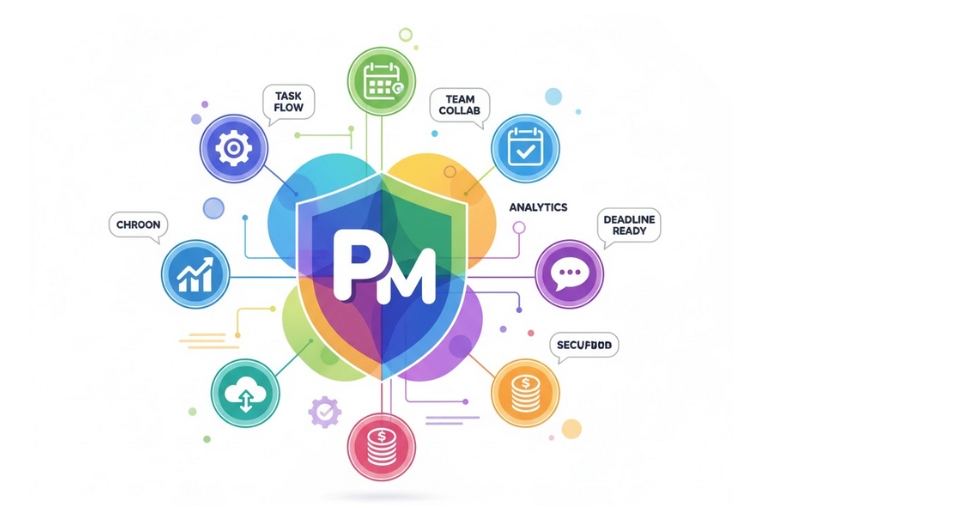
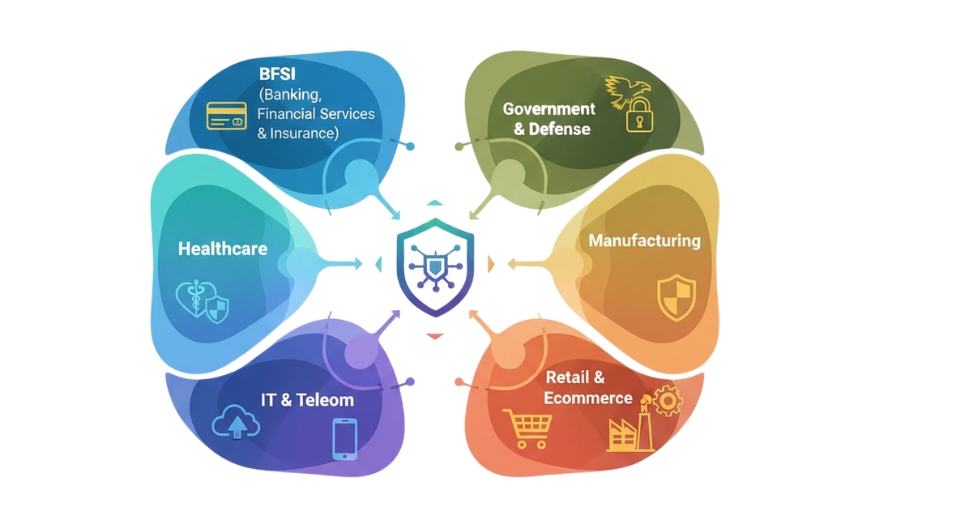

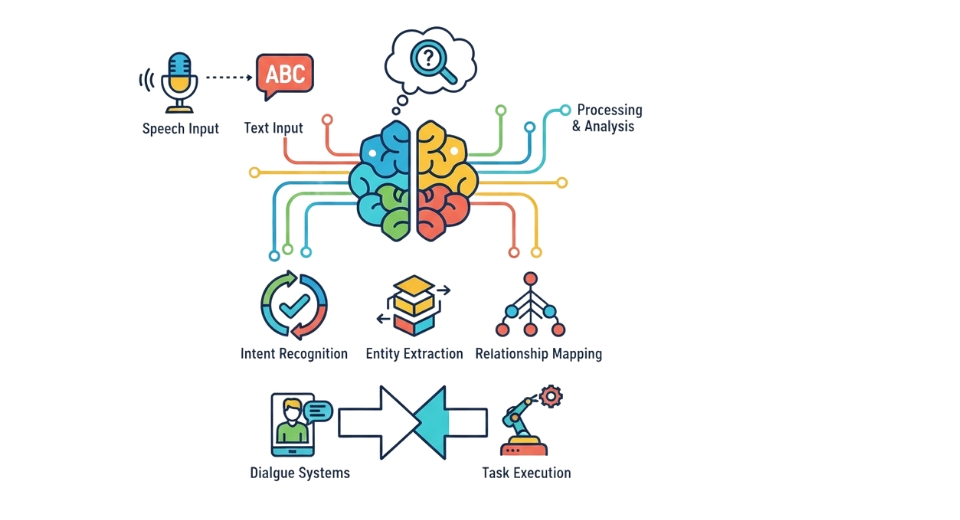

 US: +1 3023308252
US: +1 3023308252






